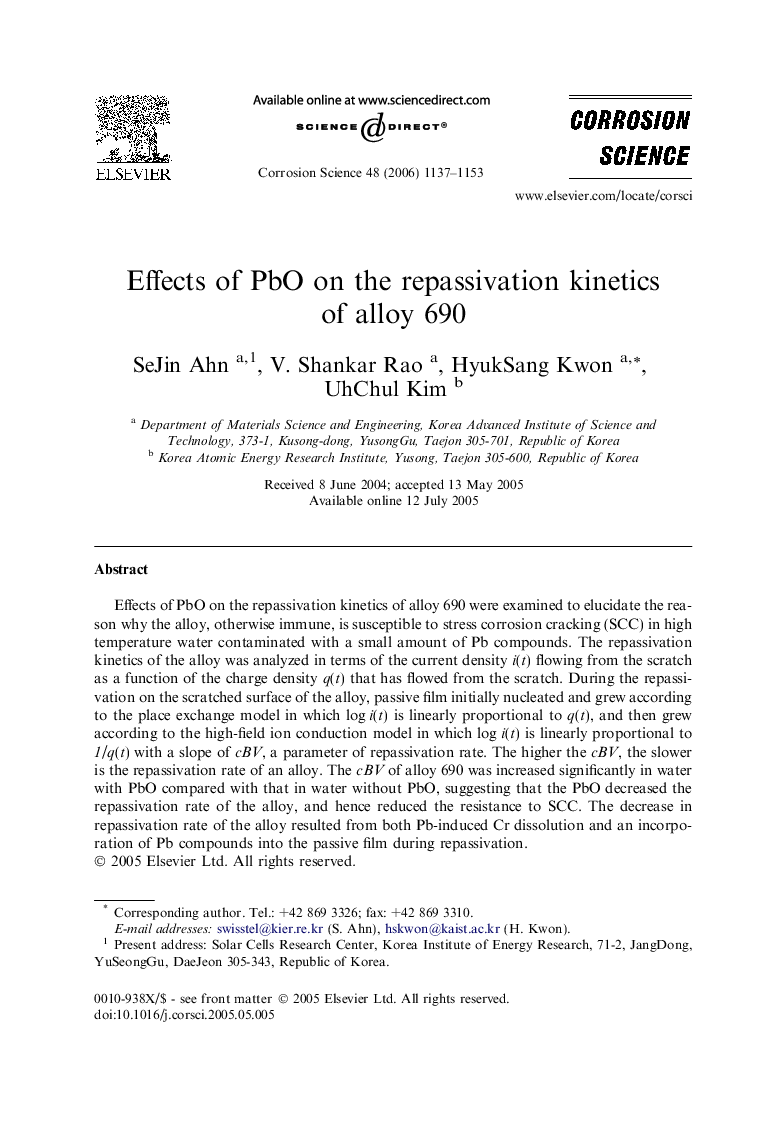| Article ID | Journal | Published Year | Pages | File Type |
|---|---|---|---|---|
| 1471825 | Corrosion Science | 2006 | 17 Pages |
Abstract
Effects of PbO on the repassivation kinetics of alloy 690 were examined to elucidate the reason why the alloy, otherwise immune, is susceptible to stress corrosion cracking (SCC) in high temperature water contaminated with a small amount of Pb compounds. The repassivation kinetics of the alloy was analyzed in terms of the current density i(t) flowing from the scratch as a function of the charge density q(t) that has flowed from the scratch. During the repassivation on the scratched surface of the alloy, passive film initially nucleated and grew according to the place exchange model in which log i(t) is linearly proportional to q(t), and then grew according to the high-field ion conduction model in which log i(t) is linearly proportional to 1/q(t) with a slope of cBV, a parameter of repassivation rate. The higher the cBV, the slower is the repassivation rate of an alloy. The cBV of alloy 690 was increased significantly in water with PbO compared with that in water without PbO, suggesting that the PbO decreased the repassivation rate of the alloy, and hence reduced the resistance to SCC. The decrease in repassivation rate of the alloy resulted from both Pb-induced Cr dissolution and an incorporation of Pb compounds into the passive film during repassivation.
Related Topics
Physical Sciences and Engineering
Materials Science
Ceramics and Composites
Authors
SeJin Ahn, V. Shankar Rao, HyukSang Kwon, UhChul Kim,
